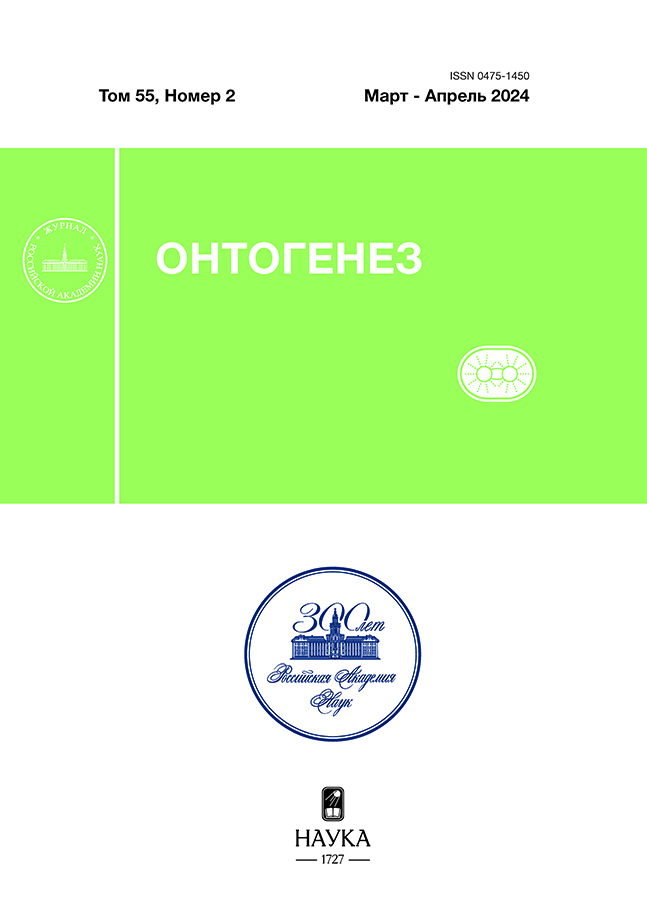CRISPR technology of genome editing helps to manipulate the offspring sex ratio in mice
- Authors: Kulibin A.Y.1
-
Affiliations:
- Koltzov Institute of Developmental Biology of the Russian Academy of Sciences
- Issue: Vol 55, No 2 (2024)
- Pages: 68-74
- Section: ТОЧКА ЗРЕНИЯ
- URL: https://ruspoj.com/0475-1450/article/view/681454
- DOI: https://doi.org/10.31857/S0475145024020031
- EDN: https://elibrary.ru/MDBLPS
- ID: 681454
Cite item
Abstract
Development of technologies for producing mainly single-sex progeny is urgently needed for many areas of agriculture and laboratory research that require animals of predominantly one sex. Such technologies would reduce economic costs and address ethical concerns about culling animals of undesired sex. For some species with external fertilization, it is possible to manipulate the offspring sex ratios by changing the temperature or acidity of the environment where the fertilization occurs. However, these methods are not suitable for animals in which sex is determined by a set of sex chromosomes, such as mammals. In this case, breeding systems using genome editing technologies, such as CRISPR-Cas9, can help. This review describes the results of three recent studies on laboratory mice that present different approaches to producing male-only and female-only litters.
Full Text
About the authors
A. Yu. Kulibin
Koltzov Institute of Developmental Biology of the Russian Academy of Sciences
Author for correspondence.
Email: Kulibin.A.BKRJ@gmail.com
Russian Federation, Moscow, 119334, ul. Vavilova 26
References
- Астауров Борис Львович (1904–1974) // Выдающиеся ученые Института. Виртуальный музей Института биологии развития им. Н. К. Кольцова РАН. http://museum.idbras.ru/?show=content32
- Rath D., Tiedemann D., Gamrad L., Johnson L.A. et al. Sex-sorted boar sperm — an update on related production methods. // Reproduction in domestic animals. 2015. Vol.50, Suppl 2. P. 56–60.
- Yin L., Maddison L.A., Li M., Kara N. et al. Multiplex conditional mutagenesis using transgenic expression of Cas9 and sgRNAs. // Genetics. 2015. Vol.200, № 2. P. 431–441.
- Galizi R., Hammond A., Kyrou K., Taxiarchi C. et al. A CRISPR-Cas9 sex-ratio distortion system for genetic control. // Sci. Rep. 2016. Vol.6. P. 31139.
- Zhang Z., Niu B., Ji D., Li M. et al. Silkworm genetic sexing through W chromosome-linked, targeted gene integration. // Proc. Natl. Acad. Sci. USA. 2018. Vol.115, № 35. P. 8752–8756.
- Fasulo B., Meccariello A., Morgan M., Borufka C., Papathanos P.A., Windbichler N. A fly model establishes distinct mechanisms for synthetic CRISPR/Cas9 sex distorters. // PLoS Genet. 2020. Vol.16, № 3. P.e1008647.
- Yosef I., Edry-Botzer L., Globus R., Shlomovitz I. et al. A genetic system for biasing the sex ratio in mice. // EMBO Rep. 2019. Vol.20, № 8. P.e48269.
- Ran F., Hsu P., Wright J. et al. Genome engineering using the CRISPR-Cas9 system. // Nat. Protoc. 2013. Vol.8. P. 2281–2308.
- Douglas, C., Maciulyte, V., Zohren, J. et al. CRISPR-Cas9 effectors facilitate generation of single-sex litters and sex-specific phenotypes. // Nat. Commun. 2021. Vol.12. P. 6926.
- Morham S.G., Kluckman K.D., Voulomanos N., Smithies O. Targeted disruption of the mouse topoisomerase I gene by camptothecin selection. // Mol. Cell Biol. 1996. Vol.16, № 12. P. 6804–6809.
- Yosef I., Mahataa T., Chenb Y., Bar-Joseph H. et al. Engineering mice for female-biased progeny without impacting genetic integrity and litter size. (preprint)// bioRxiv. 2024. https://doi.org/10.1101/2023.11.21.568055
- McCutcheon S.R., Rohm D., Iglesias N., Gersbach C. A. Epigenome editing technologies for discovery and medicine. // Nature Biotechnology. 2024. Vol.42. P. 1199–1217.
- Zheng H., Stratton C.J., Morozumi K., Jin J., Yanagimachi R., Yan W. Lack of Spem1 causes aberrant cytoplasm removal, sperm deformation, and male infertility. // Proc. Natl. Acad. Sci. USA. 2007. Vol.104, № 16. P. 6852–6857.
Supplementary files













